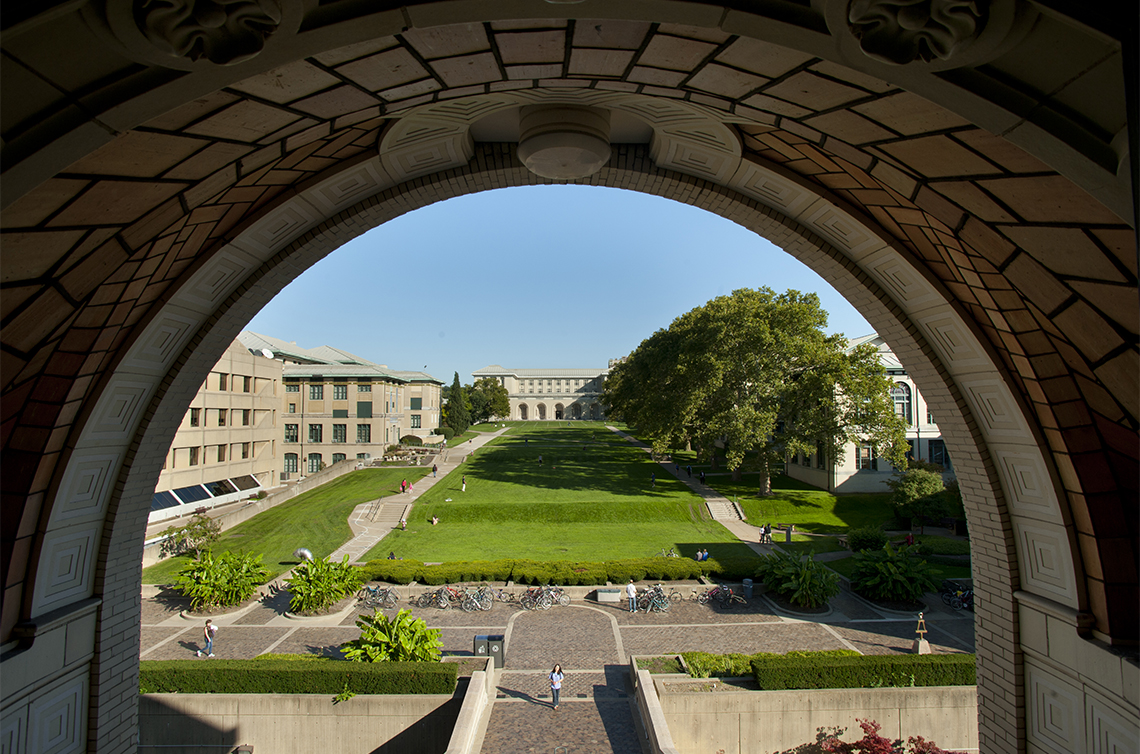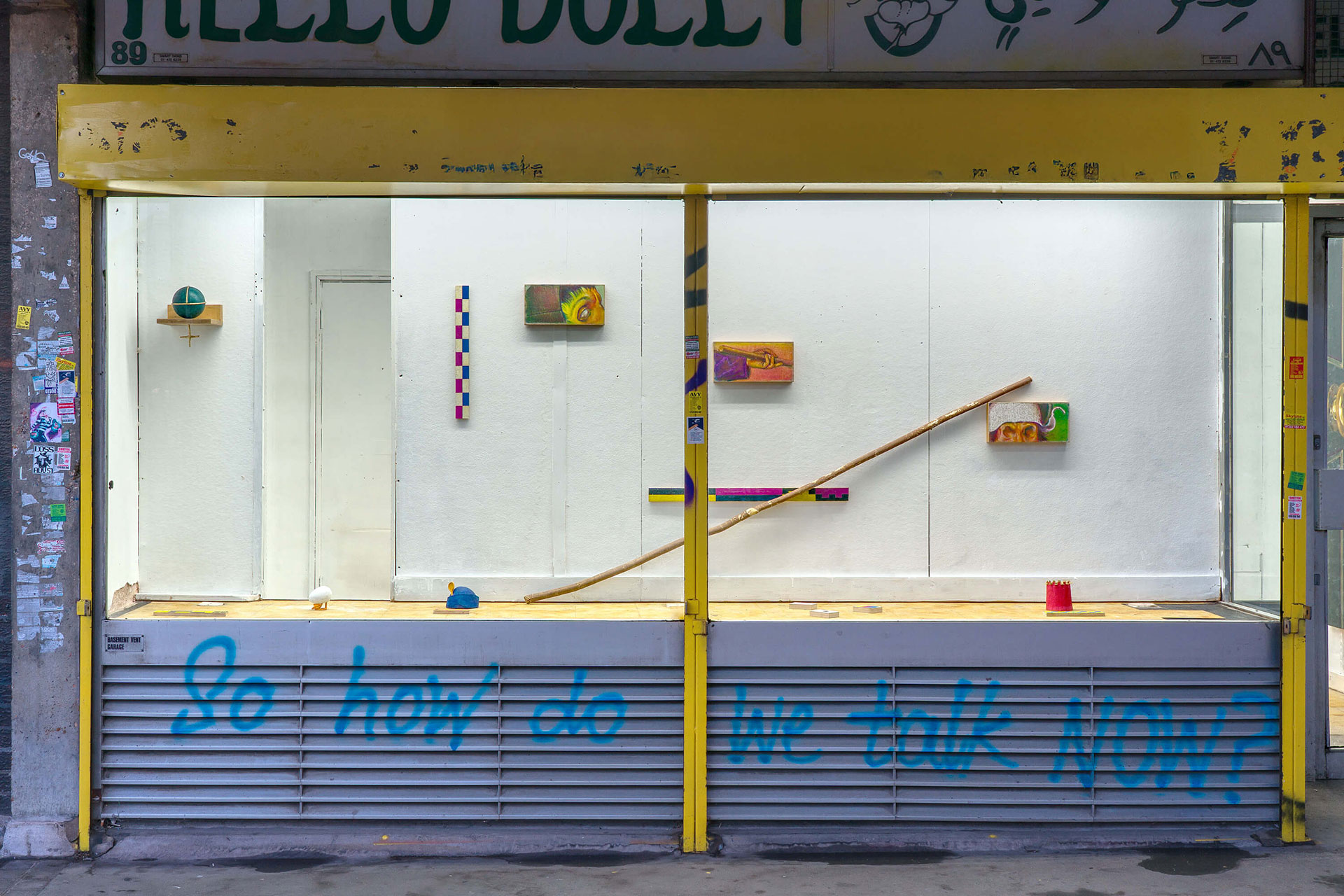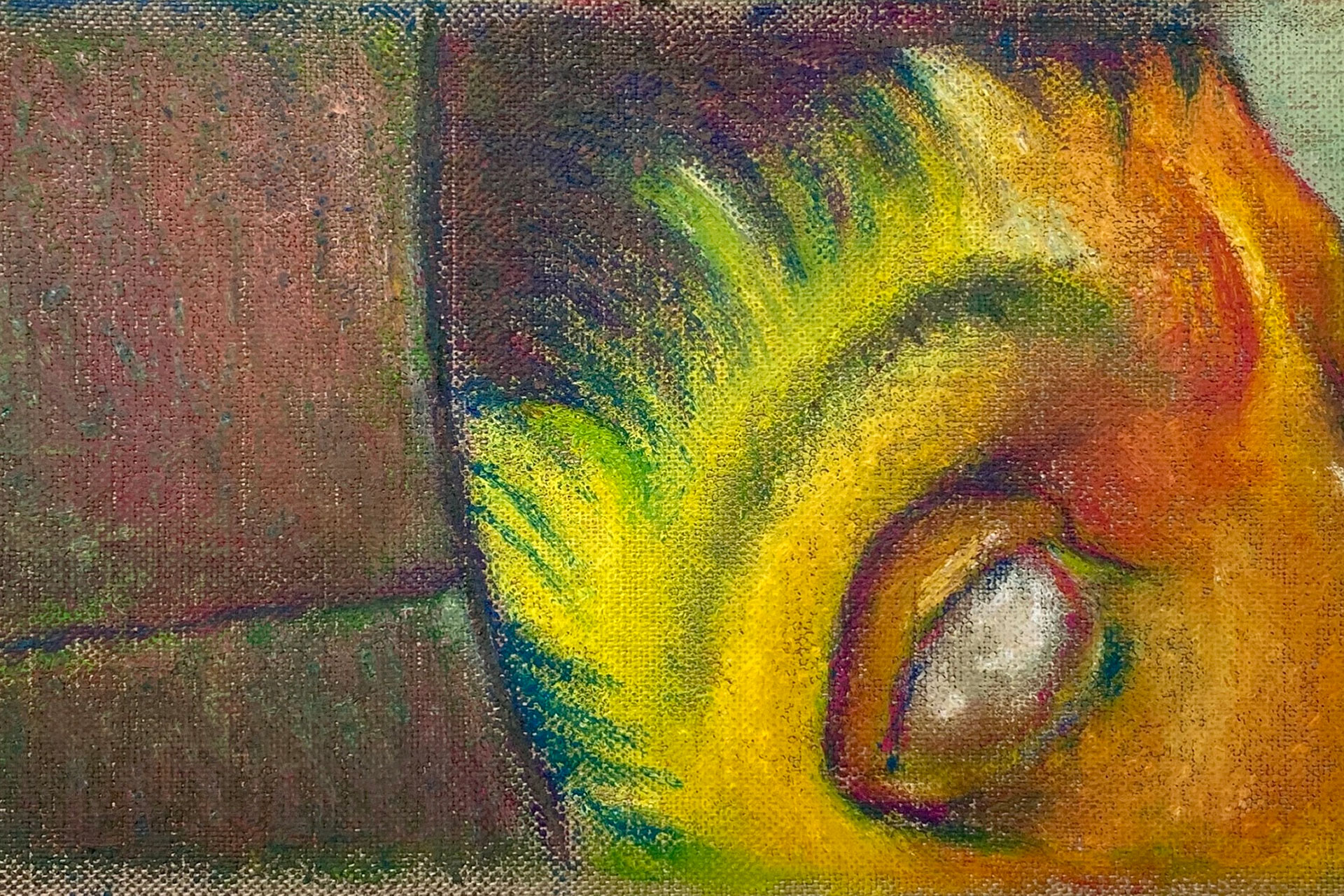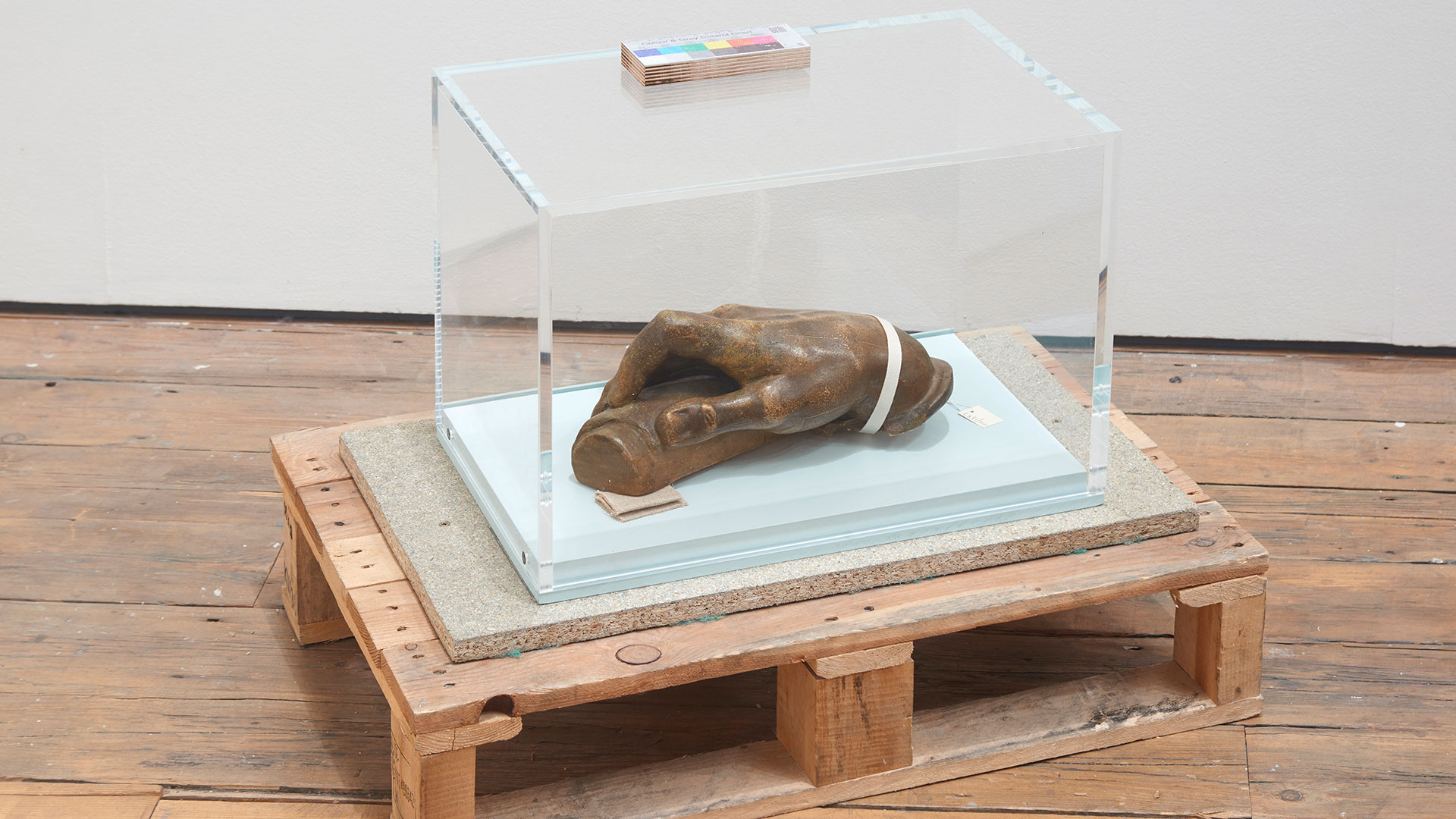
Concluding the yearlong Starr Fellowship, Barrois Jr. presents new work in a solo show at the Royal Academy of Arts and contributes to a group exhibition at Public Gallery in London.
Hand of Glory
Royal Academy of Arts | July 11–August 17, 2025
Professor Lyndon Barrois Jr. presents new works in drawing, painting, and sculptural assemblage made during his time as The Starr Fellow at the Royal Academy Schools in London. “Hand of Glory” borrows forms from existing scenography, art history, and prop logics of film production to produce what he calls static filmmaking, evoking a sense of the cinematic without moving image. Barrois Jr. alludes to a story of a museum heist as a means of wealth redistribution, thereby absorbing objects and works from museum collections, and fabricating original works in the guise of a copyist. He uses the tools and aesthetics of museum conservation to muddle value, distorting perceptions of what has been forged, restored or newly produced.
The show’s title references a folkloric figure of the mummified, waxed candle made from the hand of a thief, that when lit and placed on a mantle piece, would enable a burglar to pass through a residence undetected. Considering histories of pillaging and ongoing material extraction, the show draws a thread through time, citing references and objects that bring mythical acts of theft into present relief.
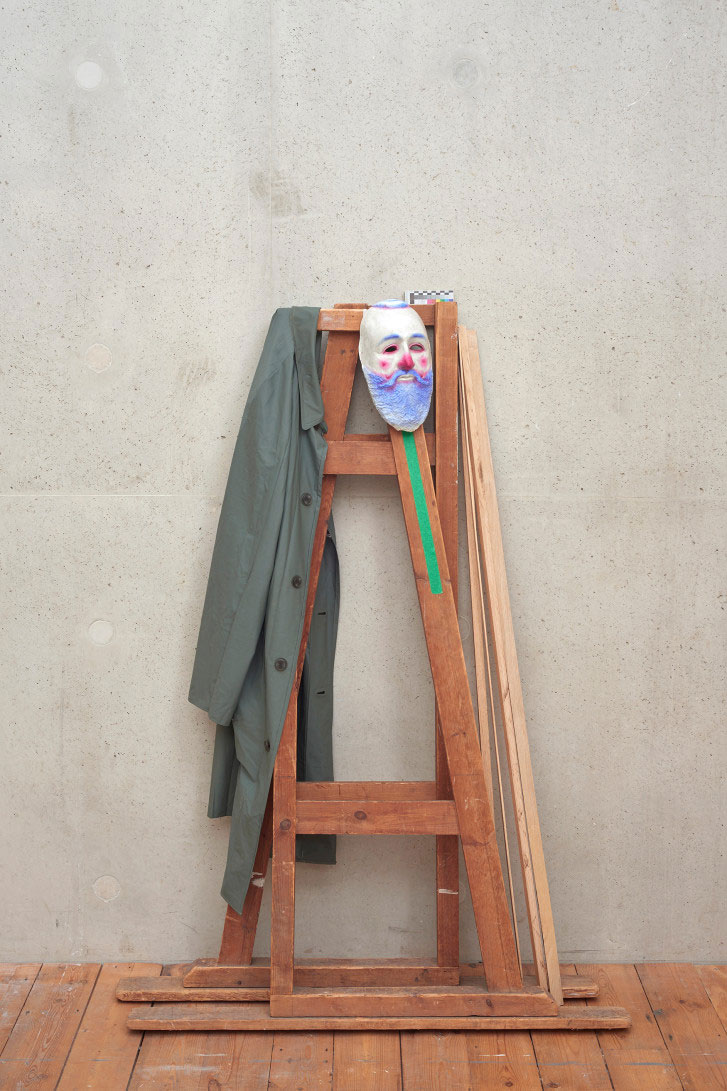
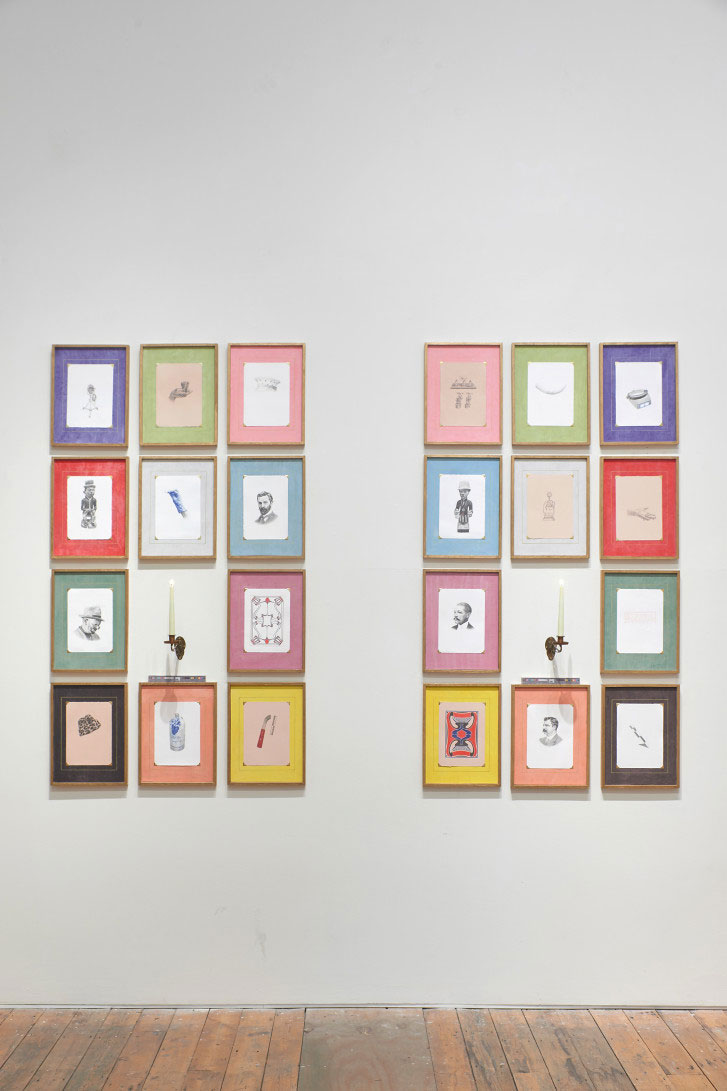
Left: Stand-in for a Flayed Fingersmith (The Killing), 2025, Royal Academy Schools. Right: Indiscreet (after Stanley Donen), 2025, Royal Academy Schools. Bottom: A Witnessing (After Pieter Bruegel the Elder), 2025 (details), Public Gallery.
Camera Obscura
Public Gallery | July 11–August 6, 2025
Also on view is “Camera Obscura,” a group exhibition at Public Gallery featuring works by Lyndon Barrois Jr. alongside John Miller and Richard Hoeck, Russell Perkins, Cece Philips, Taylor Simmons, and Tiffany Wellington. The show explores themes of theatricality, illusion, and the mechanics of seeing, with the camera obscura — a precursor to photography that inverts and reverses images — serving as both metaphor and anchor.
Barrois Jr.’s contribution, A Witnessing (After Pieter Bruegel the Elder) (2025) occupies the gallery vitrine and reinterprets works by its titular reference to interrogate the historical gaze and its entanglement with race, ethnography and systems of classification. Barrois Jr.’s oil stick paintings on Belgian linen excerpt and reframe fragments of The Blind Leading the Blind (1568), while sculptural elements resurface motifs from Netherlandish Proverbs (1559), The Beggars (1568) and Peasant Wedding (1568). Alongside Barrois Jr.’s “cabinet of curiosities,” replicas of color and scale charts — tools from museum registries, archaeological study, and forensic science — suggest a taxonomy of visual knowledge and power.

